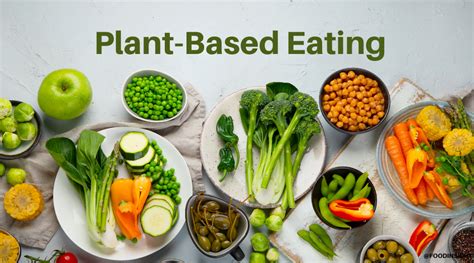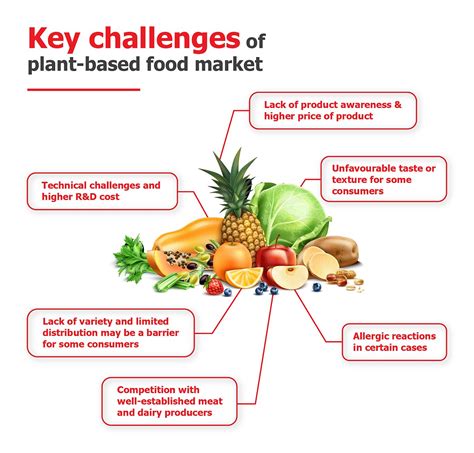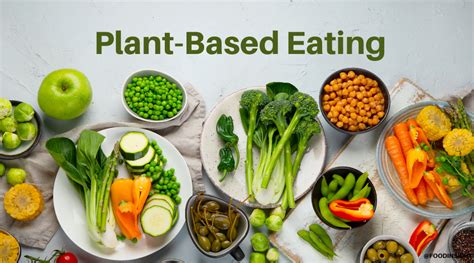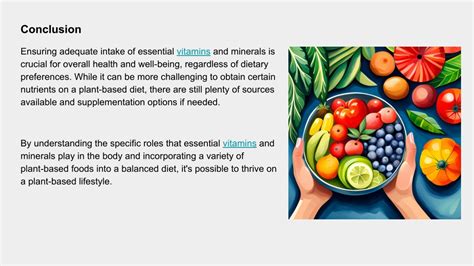Intro
Eating a whole food vegetable-based diet has become increasingly popular in recent years, and for good reason. This type of diet has been shown to have numerous health benefits, from reducing the risk of chronic diseases like heart disease and diabetes, to promoting weight loss and improving overall well-being. By focusing on whole, unprocessed foods like vegetables, fruits, whole grains, and legumes, individuals can reap the rewards of a balanced and nutritious diet. In this article, we will delve into the world of whole food vegetable-based diets, exploring the benefits, key components, and practical tips for incorporating this way of eating into your daily life.
A whole food vegetable-based diet is centered around plant-based foods, with an emphasis on whole, unprocessed ingredients. This means avoiding or limiting foods that are high in added sugars, salt, and unhealthy fats, and instead opting for foods that are rich in nutrients and fiber. By doing so, individuals can experience a range of benefits, from improved digestion and energy levels, to reduced inflammation and a lower risk of chronic diseases. Whether you're looking to improve your overall health, manage a specific health condition, or simply feel more energized and focused, a whole food vegetable-based diet is definitely worth considering.
One of the key advantages of a whole food vegetable-based diet is its ability to provide the body with the nutrients it needs to function optimally. Vegetables, for example, are packed with vitamins, minerals, and antioxidants, which help to protect cells from damage and support overall health. Leafy green vegetables like spinach and kale are particularly rich in nutrients, providing a boost of iron, calcium, and vitamins A, C, and K. Other vegetables like bell peppers, carrots, and sweet potatoes are high in vitamin C and beta-carotene, which help to support immune function and protect against chronic diseases.
Benefits of a Whole Food Vegetable-Based Diet

Key Components of a Whole Food Vegetable-Based Diet
A whole food vegetable-based diet is centered around whole, unprocessed foods like vegetables, fruits, whole grains, and legumes. Some of the key components of this type of diet include: * Vegetables: Dark leafy greens like spinach and kale, as well as other vegetables like bell peppers, carrots, and sweet potatoes. * Fruits: Fresh, frozen, or dried fruits like berries, citrus fruits, and apples. * Whole grains: Brown rice, quinoa, whole wheat bread, and whole grain pasta. * Legumes: Beans, lentils, and peas, which are high in protein and fiber. * Healthy fats: Nuts, seeds, avocados, and olive oil, which provide a boost of healthy fats and calories.Practical Tips for Incorporating a Whole Food Vegetable-Based Diet

Common Challenges and Solutions
While a whole food vegetable-based diet can be incredibly beneficial, there are some common challenges that individuals may face when getting started. Some of these challenges include: * Lack of time: With busy schedules and limited time for cooking, it can be challenging to prepare whole, plant-based meals. * Limited access to whole foods: Depending on where you live, it may be difficult to access whole, unprocessed foods, particularly in areas with limited grocery stores or farmers' markets. * Social pressures: Eating a whole food vegetable-based diet can be challenging in social situations, where foods may be high in added sugars, salt, and unhealthy fats.Overcoming Common Challenges

Staying Motivated and Engaged
Staying motivated and engaged with a whole food vegetable-based diet can be challenging, particularly in the face of social pressures or limited access to whole foods. Some tips for staying motivated and engaged include: * Finding healthy alternatives: Finding healthy alternatives to your favorite foods can help to make the transition to a whole food vegetable-based diet easier and more enjoyable. * Exploring new recipes: Trying new recipes and experimenting with different flavors and ingredients can help to keep your diet interesting and engaging. * Tracking progress: Keeping track of your progress, whether through a food diary or mobile app, can help to provide motivation and accountability.Nutritional Considerations

Addressing Nutritional Concerns
While there are certainly nutritional concerns to consider when adopting a whole food vegetable-based diet, there are also many ways to address these concerns. Some tips for addressing nutritional concerns include: * Consulting with a healthcare professional: Consulting with a healthcare professional or registered dietitian can help to ensure that you are getting all of the nutrients you need. * Taking supplements: Taking supplements or fortified foods can help to fill any nutritional gaps, particularly for nutrients like vitamin B12 and omega-3 fatty acids. * Eating a variety of foods: Eating a variety of whole, unprocessed foods can help to ensure that you are getting all of the nutrients you need.Conclusion and Next Steps

We hope that this article has provided you with a comprehensive overview of the benefits and practical considerations of a whole food vegetable-based diet. If you have any questions or comments, please don't hesitate to reach out. We'd love to hear from you and help you on your journey to a healthier, happier you.
What are the benefits of a whole food vegetable-based diet?
+A whole food vegetable-based diet has been shown to have numerous health benefits, from reducing the risk of chronic diseases like heart disease and diabetes, to promoting weight loss and improving overall well-being.
What are some key components of a whole food vegetable-based diet?
+A whole food vegetable-based diet is centered around whole, unprocessed foods like vegetables, fruits, whole grains, and legumes. Some of the key components of this type of diet include dark leafy greens like spinach and kale, as well as other vegetables like bell peppers, carrots, and sweet potatoes.
How can I incorporate a whole food vegetable-based diet into my daily life?
+Incorporating a whole food vegetable-based diet into your daily life can be easy and delicious, with a few simple tips and tricks. Some practical tips for getting started include starting slow, planning ahead, and shopping the perimeter of the grocery store.
